


xxxxxVictor Hugo, the French poet, novelist and dramatist, was the leading champion of Romanticism, with works such as the verse play Hernani, the drama The King’s Fool, and the novel The Hunchback of Notre Dame, published in 1831. His preface to the play Cromwell, produced in 1838, roundly condemned the restraints imposed by Classicism on all literary forms. His writing showed his verve for life, his depth of compassion, and his mastery of metre and language - the means by which he conjured up such a wealth of characters, moods and situations. His many other works included the dramas Lucrèce Borgia and Ruy Blas, and his four books of contemplative verse Autumn Leaves, Songs of Twilight, Inner Voices and Sunlight and Shadows. Although a monarchist in his early days, he became an ardent republican, and was forced into exile when Napoleon III seized power in 1851. As we shall see, it was while living in Guernsey in the Channel Islands that he wrote his second great novel, Les Misérables, in 1862 (Vb). Among his circle of romantic poets were Alphonse de Lamartine, Alfred de Vigny, Alfred de Musset, Prosper Mérimée and Théophile Gautier.
VICTOR HUGO 1802 - 1885
(G3c, G4, W4, Va, Vb, Vc)
Acknowledgements
Hugo: detail, by the French painter Léon-Joseph-Florentin Bonnat (1833-1922), 1879 – Château de Versailles, France. Quasimodo: date and artist unknown. Vigny: lithograph by the French artist Antoine Maurin (1793-1860), 1832 – National Library of France, Paris. Musset: by the French painter Charles Landelle (1821-1908), 1854 – Château de Versailles, France. Gautier: detail, by the French photographer Nadar (Gaspard-Félix Tuournachon 1820-1910), c1856 – Metropolitan Museum of Art, New York.
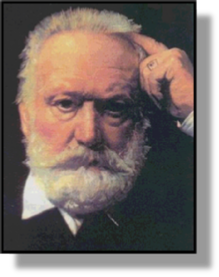 xxxxxVictor Hugo, the French poet, novelist and dramatist, was the leading apostle and champion of Romanticism. His poetry and verse plays, such as Hernani; his dramas, such as The King’s Fool and Ruy Blas; and his great historical novels - notably The Hunchback of Notre Dame and Les Misérables - made him the giant of the French Romantic Movement, and extended the influence of that movement for some thirty years or more. And if proof were needed of his commitment to the literary ideals of romanticism and his abhorrence of all restrictive practices, one need only read the preface to his play Cromwell, produced in 1838. In its day this came to be regarded as the manifesto of Romanticism. Furthermore, the special brand of romanticism that he gave to French literature in all its forms was extremely powerful. His writing showed his verve for life, his depth of compassion, and his mastery of metre and language, the means by which he conjured up such a wealth of characters, moods and situations.
xxxxxVictor Hugo, the French poet, novelist and dramatist, was the leading apostle and champion of Romanticism. His poetry and verse plays, such as Hernani; his dramas, such as The King’s Fool and Ruy Blas; and his great historical novels - notably The Hunchback of Notre Dame and Les Misérables - made him the giant of the French Romantic Movement, and extended the influence of that movement for some thirty years or more. And if proof were needed of his commitment to the literary ideals of romanticism and his abhorrence of all restrictive practices, one need only read the preface to his play Cromwell, produced in 1838. In its day this came to be regarded as the manifesto of Romanticism. Furthermore, the special brand of romanticism that he gave to French literature in all its forms was extremely powerful. His writing showed his verve for life, his depth of compassion, and his mastery of metre and language, the means by which he conjured up such a wealth of characters, moods and situations.
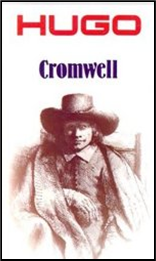
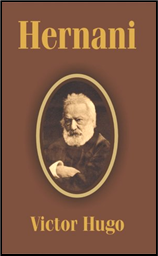 xxxxxHugo was born in Bresancon, the son of one of Napoleon’s generals. As a result he spent his early childhood on the move, attending various schools until, at the age of ten, he settled in Paris with his mother. There he attended the Lycée Louis-le-Grand and went on to study law. His literary talent began to show at this early stage, but he was also interested in the world of politics. Under his mother’s guidance he became an ardent monarchist and later, during the reign of Louis Philippe served as a Paris representative in the Consultative Assembly. Gradually, however, he had a change of heart, and by the age of fifty he had become a staunch republican, forced into exile in 1851 because of the strength of his views. From the beginning of his career, his literary work was successful, being full of powerful imagery and highly romantic themes, ranging from the sublime to the grotesque. These early productions included his verse, Miscellaneous Odes and Poems, and Odes and Ballads, and two novels, Han of Iceland and the exotic tale entitled Bug Jargal (translated The Slave King). Then in 1828 the path that his future career was to take was made crystal clear with his verse drama Cromwell. The play itself was never performed, but Hugo’s preface to this work proved to be the manifesto of a regenerated Romantic school, a powerful vindication of romantic literary theory by means of an all-out denunciation of the restraints and conventions of outmoded classicism. He sought the freedom of subject and expression as exemplified by William Shakespeare. And as an example of this licence to explore humanity in all its moods, in 1830 he produced his epic poetic drama Hernani, a play extolling the virtues of a tragic hero rebelling against society. Enacted on the stage of the Comédie Française, where, ironically enough, so many of Jean Racine’s classical masterpieces had been performed, it was a triumphant success, helped not a little by the noisy support of Hugo’s large circle of friends. The so-called “battle of Hernani” having been won, Hugo’s place on the literary scene was firmly established.
xxxxxHugo was born in Bresancon, the son of one of Napoleon’s generals. As a result he spent his early childhood on the move, attending various schools until, at the age of ten, he settled in Paris with his mother. There he attended the Lycée Louis-le-Grand and went on to study law. His literary talent began to show at this early stage, but he was also interested in the world of politics. Under his mother’s guidance he became an ardent monarchist and later, during the reign of Louis Philippe served as a Paris representative in the Consultative Assembly. Gradually, however, he had a change of heart, and by the age of fifty he had become a staunch republican, forced into exile in 1851 because of the strength of his views. From the beginning of his career, his literary work was successful, being full of powerful imagery and highly romantic themes, ranging from the sublime to the grotesque. These early productions included his verse, Miscellaneous Odes and Poems, and Odes and Ballads, and two novels, Han of Iceland and the exotic tale entitled Bug Jargal (translated The Slave King). Then in 1828 the path that his future career was to take was made crystal clear with his verse drama Cromwell. The play itself was never performed, but Hugo’s preface to this work proved to be the manifesto of a regenerated Romantic school, a powerful vindication of romantic literary theory by means of an all-out denunciation of the restraints and conventions of outmoded classicism. He sought the freedom of subject and expression as exemplified by William Shakespeare. And as an example of this licence to explore humanity in all its moods, in 1830 he produced his epic poetic drama Hernani, a play extolling the virtues of a tragic hero rebelling against society. Enacted on the stage of the Comédie Française, where, ironically enough, so many of Jean Racine’s classical masterpieces had been performed, it was a triumphant success, helped not a little by the noisy support of Hugo’s large circle of friends. The so-called “battle of Hernani” having been won, Hugo’s place on the literary scene was firmly established.
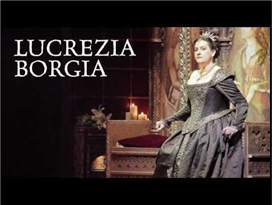 xxxxxThere followed Hugo’s most productive period, stretching over the next thirteen years. Hernani proved the first in a series of dramas which included The King’s Fool (a play centred around the love affairs of Francis I), the prose drama Lucrezia Borgia, and the melodrama Ruy Blas. Also to this period belongs his novel Claude Gueux - a work which
xxxxxThere followed Hugo’s most productive period, stretching over the next thirteen years. Hernani proved the first in a series of dramas which included The King’s Fool (a play centred around the love affairs of Francis I), the prose drama Lucrezia Borgia, and the melodrama Ruy Blas. Also to this period belongs his novel Claude Gueux - a work which 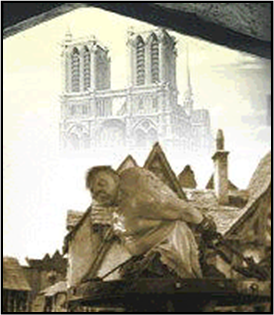 did a public service by its eloquent criticism of the prison system - and his four books of contemplative verse Autumn Leaves, Songs of Twilight, Inner Voices and Sunlight and Shadows. And in 1831, of course, came The Hunchback of Notre Dame, the first of his two great historical novels. This powerful, violent melodrama, set in medieval Paris, and telling of the tender love of a deformed bell ringer (Quasimodo) for a gypsy dancer (Esmeralda), brought him international fame. Like all his historical dramas, the plot itself is somewhat contrived and untidy, but it shows Hugo’s descriptive skills, his warm-hearted understanding of human nature, and his masterly command of language.
did a public service by its eloquent criticism of the prison system - and his four books of contemplative verse Autumn Leaves, Songs of Twilight, Inner Voices and Sunlight and Shadows. And in 1831, of course, came The Hunchback of Notre Dame, the first of his two great historical novels. This powerful, violent melodrama, set in medieval Paris, and telling of the tender love of a deformed bell ringer (Quasimodo) for a gypsy dancer (Esmeralda), brought him international fame. Like all his historical dramas, the plot itself is somewhat contrived and untidy, but it shows Hugo’s descriptive skills, his warm-hearted understanding of human nature, and his masterly command of language.
xxxxxThe year 1843 brought disappointment and then deep distress. The failure of his verse drama Les Burgraves - an unusual occurrence for Hugo - was followed by the tragic death of one of his daughters, Leopoldine, drowned in a boating accident, and this sapped his literary energy. He now turned to a more active role in politics, a sphere in which he had always shown a lively interest. Though a Royalist in his younger days - due mainly to his mother’s influence - he had progressively adopted a republican point of view, due mainly to the reactionary rule of Charles X, especially disliked for its press and stage censorship. He accepted a post in the government of Louis Philippe in 1845, together with a peerage, but with the appointment of Louis Napoleon as President in 1848 all this very soon changed. When Napoleon seized complete control in 1851, Hugo showed his true colours, and was obliged to flee the country. He took refuge for a while in Belgium, and then in 1855 he began his long period of exile - all of fifteen years - on Guernsey in the Channel Islands. There, as we shall see, he began to write again, employing his pen to savage the French government, compose some memorable verse, and produce his second great novel Les Misérables in 1862 (Vb).
xxxxxDuring the 1820s Hugo founded or helped to found two reviews, the Conservateur Littéraire and the Muse Française. These together with the literary circle to which he belonged, “the Cenacle”, brought him into contact with a large number of enthusiastic romantics, including Alphonse de 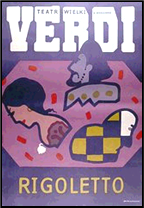 Lamartine, Alfred de Vigny, Alfred de Musset, Prosper Mérimée and Théophile Gautier.
Lamartine, Alfred de Vigny, Alfred de Musset, Prosper Mérimée and Théophile Gautier.
xxxxxIncidentally, the Italian composer Giuseppe Verdi wrote two operas based on Hugo’s works: His Ernani of 1844, an adaptation of the verse play Hernani, and his Rigoletto of 1851, centred around the drama The King’s Fool. Not surprisingly, Hugo’s famous The Hunchback of Notre Dame has been made into films and featured on television.
xxxxx…… Hugo was devastated by the untimely death of his daughter Leopoldine in 1843. Later, in his collection of poems entitled Les Contemplations of 1856, he divided one of the volumes into “Autrefois” (before) and “Aujourd’hui” (today) to mark the timing of her death.
Including:
Alfred de Vigny, Alfred de Musset,
Théophile Gautier and
Charles Leconte de Lisle

W4-1830-1837-W4-1830-1837-W4-1830-1837-W4-1830-1837-W4-1830-1837-W4-1830-1837-W4
xxxxxThe French poet, novelist and dramatist Alfred de Vigny (1797-1863) was the champion of Romanticism prior to Victor Hugo. His Poems Ancient and Modern of 1826, and his later collection Destinies convey the mixture of pessimism and stoicism which runs through much of his work. His Chatterton of 1835, based around the tragic life of the English poet Thomas Chatterton, portrays the lonely struggle of a poetic genius against an unsympathetic society. He adapted two of Shakespeare’s plays, Othello and The Merchant of Venice. He was particularly admired by Hugo and the poet Alphonse de Lamartine.
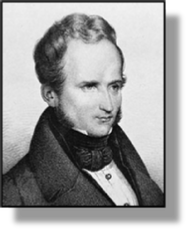
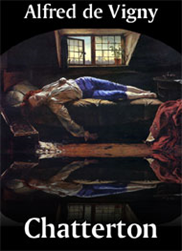 xxxxxThe French poet, novelist and dramatist Alfred de Vigny (1797-1863) was regarded as the leader of Romanticism before Victor Hugo came on the scene, a reputation based partly on his collection of Poems Ancient and Modern of 1826. He also wrote his historical novel Cinq Mars in that year, centred around a conspiracy against cardinal Richelieu by the Marquis de Cinq Mars during the reign of Louis XIII. In 1835 he produced Servitude and Military Greatness, a work stressing the honourable nature of a military career, and then Chatterton, a romantic drama in three acts based on the tragic life of the English poet Thomas Chatterton.
xxxxxThe French poet, novelist and dramatist Alfred de Vigny (1797-1863) was regarded as the leader of Romanticism before Victor Hugo came on the scene, a reputation based partly on his collection of Poems Ancient and Modern of 1826. He also wrote his historical novel Cinq Mars in that year, centred around a conspiracy against cardinal Richelieu by the Marquis de Cinq Mars during the reign of Louis XIII. In 1835 he produced Servitude and Military Greatness, a work stressing the honourable nature of a military career, and then Chatterton, a romantic drama in three acts based on the tragic life of the English poet Thomas Chatterton.
xxxxxHis Destinies, a collection of eleven poems, were published the year after his death and convey the mixture of pessimism and stoical resignation which runs through much of his work. The idea of the poetic genius in conflict with an unsympathetic, materialistic society (as in Chatterton) is a dominant theme, and a major source of his melancholia. As a romantic he was particularly interested in the works of William Shakespeare, adapting both Othello in his Le More de Venise, and The Merchant of Venice in his Shylock in 1829. Vigny was born in Loches, near Tours, but was brought up and educated in Paris. He served twelve years as an officer in the French army before making his name as a philosopher poet. His friend Hugo much admired his work, as did the poet Alphonse de Lamartine.
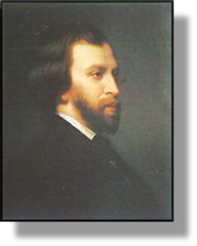
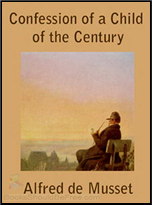 xxxxxThe Paris born poet and playwright Alfred de Musset (1810-1857) gained early success with his poems of 1829 entitled Stories of Spain and Italy. An admirer and close friend of Victor Hugo, his works in the 1830s included his highly acclaimed romantic drama Lorenzaccio, his Armchair Theatre (plays for reading) and his series of poems entitled Les Nuits. These eloquent poems and his autobiographical novel Confessions of a Child of the Century, produced in 1835, recount the bitterness and despair he felt after the ending of his short but romantic affair with the French writer George Sand, started in 1833. In his younger days he lived life to the full, and was regarded as a Paris equivalent of the English dandy “Beau” Brummell. He was elected to the French Academy in 1852.
xxxxxThe Paris born poet and playwright Alfred de Musset (1810-1857) gained early success with his poems of 1829 entitled Stories of Spain and Italy. An admirer and close friend of Victor Hugo, his works in the 1830s included his highly acclaimed romantic drama Lorenzaccio, his Armchair Theatre (plays for reading) and his series of poems entitled Les Nuits. These eloquent poems and his autobiographical novel Confessions of a Child of the Century, produced in 1835, recount the bitterness and despair he felt after the ending of his short but romantic affair with the French writer George Sand, started in 1833. In his younger days he lived life to the full, and was regarded as a Paris equivalent of the English dandy “Beau” Brummell. He was elected to the French Academy in 1852.
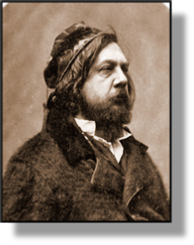
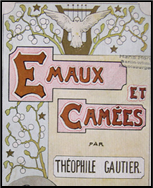 xxxxxThéophile Gautier (1811-1872) was a journalist and critic as well as a poet and novelist. He was born in Tarbes, south-western France, and trained as an artist before becoming a writer and one of Victor Hugo’s disciples. He published his first long poem, Albertus, in 1832, and his major novel, Mademoiselle de Maupin - notorious for its disdain for contemporary morality - followed three years later. His poems of 1852, collected under the title Enamels and Cameos (Émaux et Camées) were particularly remarkable for their beauty of language and their perfection of form. Other works included his narrative poem Comedy of Death, centred around his own fear of death, and the poems and prose he produced in 1845 after a visit to Spain. In two works published after his death, he gave an amusing account of the “battle of Hernani” of 1830 (History of Romanticism), and an excellent pen picture of his friend Honoré de Balzac (Contemporary Portraits).
xxxxxThéophile Gautier (1811-1872) was a journalist and critic as well as a poet and novelist. He was born in Tarbes, south-western France, and trained as an artist before becoming a writer and one of Victor Hugo’s disciples. He published his first long poem, Albertus, in 1832, and his major novel, Mademoiselle de Maupin - notorious for its disdain for contemporary morality - followed three years later. His poems of 1852, collected under the title Enamels and Cameos (Émaux et Camées) were particularly remarkable for their beauty of language and their perfection of form. Other works included his narrative poem Comedy of Death, centred around his own fear of death, and the poems and prose he produced in 1845 after a visit to Spain. In two works published after his death, he gave an amusing account of the “battle of Hernani” of 1830 (History of Romanticism), and an excellent pen picture of his friend Honoré de Balzac (Contemporary Portraits).
xxxxxGautier coined the phrase “art for art’s sake”, and this became the rallying cry of Les Parnassiens, a group of poets who attempted to replace the sentimental and emotional tone of 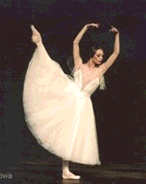 Romanticism with a poetry that was impersonal in approach and perfect in form, language and imagery.
Romanticism with a poetry that was impersonal in approach and perfect in form, language and imagery.
xxxxxIncidentally, Gautierxwas also a great champion of Romantic ballet. Having fallen in love with the ballerina Carlotta Grisi, he wrote for her the story of Giselle, adapting it from legend. It was put to music by the French composer Adolphe Adam (1803-1856), and first produced in 1841.
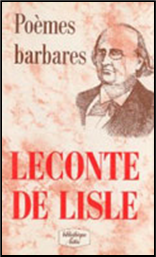 xxxxxThexParnassian Movement - named after the great mountain which was home to the Muses in Greek mythology - was led by the French poet Charles Leconte de Lisle (1818-1894). Inspired by the classical writers, his restrained, dignified style is to be seen in such works as Poèmes antiques of 1852 and Poèmes barbares, published ten years later. The movement’s Anthology, first issued in 1866, included works by Stephane Mallarmé and Paul Verlaine, the two French poets who became the leaders of the Symbolists later in the century.
xxxxxThexParnassian Movement - named after the great mountain which was home to the Muses in Greek mythology - was led by the French poet Charles Leconte de Lisle (1818-1894). Inspired by the classical writers, his restrained, dignified style is to be seen in such works as Poèmes antiques of 1852 and Poèmes barbares, published ten years later. The movement’s Anthology, first issued in 1866, included works by Stephane Mallarmé and Paul Verlaine, the two French poets who became the leaders of the Symbolists later in the century.
xxxxxIncidentally, in 1886 Leconte de Lisle was elected to succeed Victor Hugo as a member of the Académie Française.






 xxxxxVictor Hugo, the French poet, novelist and dramatist, was the leading apostle and champion of Romanticism. His poetry and verse plays, such as Hernani; his dramas, such as The King’s Fool and Ruy Blas; and his great historical novels -
xxxxxVictor Hugo, the French poet, novelist and dramatist, was the leading apostle and champion of Romanticism. His poetry and verse plays, such as Hernani; his dramas, such as The King’s Fool and Ruy Blas; and his great historical novels -
 xxxxxHugo was born in Bresancon, the son of one of Napoleon’s generals. As a result he spent his early childhood on the move, attending various schools until, at the age of ten, he settled in Paris with his mother. There he attended the Lycée Louis-
xxxxxHugo was born in Bresancon, the son of one of Napoleon’s generals. As a result he spent his early childhood on the move, attending various schools until, at the age of ten, he settled in Paris with his mother. There he attended the Lycée Louis- xxxxxThere followed Hugo’s most productive period, stretching over the next thirteen years. Hernani proved the first in a series of dramas which included The King’s Fool (a play centred around the love affairs of Francis I), the prose drama Lucrezia Borgia, and the melodrama Ruy Blas. Also to this period belongs his novel Claude Gueux -
xxxxxThere followed Hugo’s most productive period, stretching over the next thirteen years. Hernani proved the first in a series of dramas which included The King’s Fool (a play centred around the love affairs of Francis I), the prose drama Lucrezia Borgia, and the melodrama Ruy Blas. Also to this period belongs his novel Claude Gueux - did a public service by its eloquent criticism of the prison system -
did a public service by its eloquent criticism of the prison system - Lamartine, Alfred de Vigny, Alfred de Musset, Prosper Mérimée and Théophile Gautier.
Lamartine, Alfred de Vigny, Alfred de Musset, Prosper Mérimée and Théophile Gautier.

 xxxxxThe French poet, novelist and dramatist Alfred de Vigny (1797-
xxxxxThe French poet, novelist and dramatist Alfred de Vigny (1797-
 xxxxxThe Paris born poet and playwright Alfred de Musset (1810-
xxxxxThe Paris born poet and playwright Alfred de Musset (1810-
 xxxxxThéophile Gautier (1811-
xxxxxThéophile Gautier (1811- Romanticism with a poetry that was impersonal in approach and perfect in form, language and imagery.
Romanticism with a poetry that was impersonal in approach and perfect in form, language and imagery.  xxxxxThexParnassian Movement -
xxxxxThexParnassian Movement -

